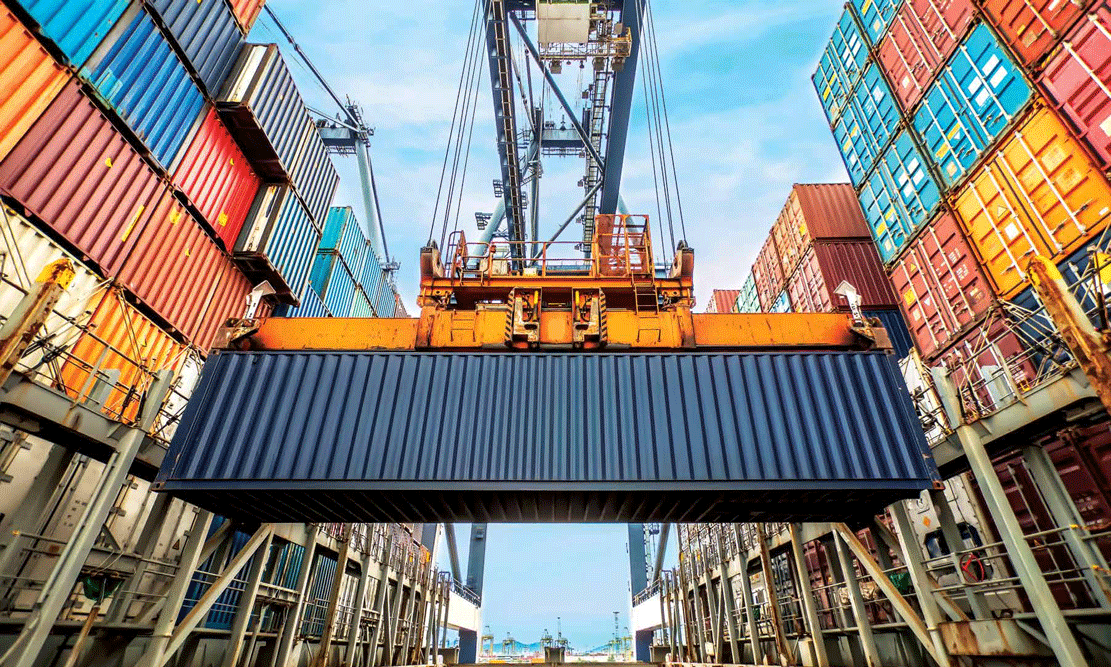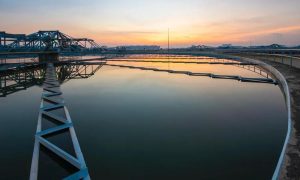Logistics leads the way in the Gulf
The challenges and opportunities of moving construction-related cargo in the GCC and wider Middle East

As large-scale construction and infrastructure projects take off in the GCC and wider Middle East, it stands to reason that the materials and equipment required to build these projects have to be moved around, sometimes to remote locations.
Enter the business of logistics. Last May, it was predicted that the logistics industry in the UAE would be worth $27 billion in 2015. Valued at $23.4 billion in 2013 by Frost & Sullivan, the industry is well on its way to growth.
Often the sole life-line for a contractor working in hard-to-reach, dangerous areas, a logistics firm can make or break a project. So how do logistics companies work with construction clients to deliver equipment, building materials and supplies to high-risk and volatile areas?
“Logistics as a whole is a good indicator of how economic outlook is,” says Abhishek Ajay Shah, managing director of Dubai-based RSA Logistics. As his firm traces its origins to before the crisis period, Shah says he has seen the industry grow ever since.
“We started when it was probably the worst time to start or be in logistics as a whole, because global trade volumes had dropped by phenomenal amounts. So from that perspective, we’ve only seen it get better from that time, just because there has been a recovery. Volumes have increased again.
“The government is investing in new facilities and you can see other logistics organisations expanding their facilities as well, which basically means that there is a general trend of growth,” Shah adds. “And we see that to continue for the foreseeable future, especially until Expo 2020, but primarily because there’s going to be a tonne of activity in the region, lots of projects going to be executed and big population growth as well.”
RSA works with clients who supply to the construction industry, Shah says, and not typically contractors, who often manage their own cargo. “You’ll find most of the construction companies are asset-based. And when you have your own asset base, you primarily look to manage your own assets yourself. So their own actual movement and repositioning of their resources is internally managed by them. After a certain size [for a] construction company, I think that’s the only way you can operate.
“The suppliers to the construction industry is where we see an opportunity for us to provide our services. So there we have a few verticals that we do. One is raw commodities like silica, fume ash, whatever it might be for the construction site,” he says, adding that the firm deals with suppliers of ceramics and construction chemicals too.
Paula Bellamy, regional manager at UK-based Allseas Global Logistics, also works with suppliers to the construction industry. “We’ve worked from builders up to clients who supply all the fixtures and fittings, windows, flooring, so my firm does small parts of construction right up to the big parts with the JCB diggers and everything,” she says.
So what are some of the main challenges of dealing with construction-related cargo? Shah notes that construction chemicals can be hard to handle.
“Chemicals have a tremendous amount of risk because of the commodities themselves. I know that is countered with a well-educated team, a constantly trained team and high-quality facilities.
And that’s how we’ve always tried to counter that. And to be honest, we’ve seen tremendous growth with regards to that sector, and that’s why we continue to invest so heavily in that.”
Bellamy, on the other hand, notes that the challenges she has faced are more regulatory and documentation-related, along with the fact that clients, particularly those in the construction sector, might need goods to arrive on a tight schedule.
“There are always challenges with customs, customs regulations, customs documentation. Then there’s the timeline problems where a lot of the clients need their products on-site very, very quickly. You could get stuck in customs due to incorrect documentation, so we find our main forte is to be a lot more proactive with documentation, make sure everything’s in place before the goods actually arrive into the Middle East,” she says.
Sylvain Kluba, regional COO Middle East and Africa at Agility Logistics, also notes the challenges of documentation for logistics providers.
“The most common issues we face are incorrect supplier documentation to meet the necessary import customs requirements, as well as dense, ambiguous or inconsistently applied regulations and complex bureaucratic customs formalities across the region,” he says.
Moreover, the emphasis on original documentation in the UAE also creates difficulties, Bellamy adds. “It’s probably a lot more original documentation over here. Nothing can be done on a copy. So that’s always a challenge, because sometimes the delay in the original documentation will cause goods to be delayed in customs.”
For Kluba, other major challenges associated with handling construction cargo are “the volume of freight, diversity and time constraints in meeting the construction build”.
In order to ensure cargo is delivered to clients on time, Kluba says it’s crucial to account for all possible scenarios.
“It is essential to have a plan B in place, in order to ensure that all possible eventualities have been accounted for and that we have the flexibility to change operational plans where required.”
Coping with difficult markets
Given the complexities that arise from transporting goods within the UAE, which boasts some of the best infrastructure in the region, what potential hurdles do logistics companies face in emerging markets or otherwise inaccessible territories?
“The challenges are vast, from ambiguous and inconsistent regulations, to slow bureaucratic processes, customs challenges, poor infrastructure and connectivity problems, instable political foundations and security issues, and finally strained capacity in areas in which it is difficult to operate,” Kluba says.
When Bellamy is asked about the most difficult market she’s had to send cargo to, she concedes it was Iraq. “Because taking it through into Iraq is very hard work on the documentation, the routing that you need to take, the timelines. Things can get stuck very simply because rules and regulations can change within a day.”
“We had to get some goods to a site which was very difficult,” she says, recounting a situation her firm once encountered in Iraq. “It had some weight limitation bridges, and it also had some overhead electricity cables which were far too low for the size of the cargo. So when you’re an employer or a freight forwarder, we re-plan the whole thing.
“Even before it’s arrived, we would decide exactly what route it’s going to take, check out the bridges, check out the weight limitations, speak to the local authorities to have electrical cables moved, and do the whole route plan before we even got the order. So that’s the beauty of having a freight forwarder involved, because they take things up to that next stage.”
Shah, on the other hand, notes the problems of operating in East African countries, which lag behind in infrastructure. Security and poor quality of roads are among the top challenges, he says.
So how do logistics providers cope with the issues faced in developing markets? Bellamy, Shah and Kluba all emphasise the importance of local know-how.
“It’s more through having local knowledge on the ground,” Bellamy says. “We teamed up with a company called Saba International [in Iraq], who we’ve got a joint venture with. If somebody’s actually living it and working it, then you can find the real problems very, very quickly.
“If you try to work with a different market and you haven’t got somebody on the ground who can give you the local expertise, then it’s always going to be a massive challenge. So whichever country we deal with, we make sure that we have people there who know exactly what they’re talking with, have years of experience, and work very, very closely with them as a team.”
“You need to know who to speak to and get the right person in the right position to do the right job,” Shah says. “We obviously work with partners for all of this. Collaborative methods will get you the best of both worlds. Where you have knowledge gaps, you approach another organisation, you work together.”
“For complex and challenging destinations of this type, planning is a critical phase long before pricing and operations. The development of yard and laydown areas is also important to ensure cargo is moved away from congested ports and kept under control, mitigating any potential delays,” Kluba says.
Advice to contractors
With the complexities of moving cargo around, Bellamy advises contractors to seek the services of freight forwarders who have experience handling similar cargo, and to seek word-of-mouth referrals too.
“It really is finding the right person to move your cargo. Don’t just rely on a cheap price, because a cheap price will be a cheap service. Go for something middle-of-the-road. Look to get a full package on the knowledge of documentation, customs clearance and sea freight,” she stresses.
“The advantage we personally have as an organisation is, one, that we build assets. So we understand what contractors need to do or how a building actually gets built,” Shah says, adding that contractors often have low storage capabilities for materials and equipment on-site, which is where third-party logistics providers can step in.
“We know that most of the time, they have low capabilities of storage on the construction site itself. And they monitor or maintain very just-in-time sort of lean methods with their suppliers on when to deliver the steel, deliver the roofing, deliver the firefighting to site.
“And that’s where we can help. We can be to a certain degree project managers of how to basically coordinate with their vendors. [It could be] as simple as actually providing them space for their machinery when it’s not deployed on-site. For medium-sized construction companies, we’re more than happy to discuss that.”
GCC RAIL
GCC rail can significantly shape the logistics industry in the Gulf region and make transporting goods between countries easier, providing governments ensure free flow of goods.
“This is going to help everybody get their business through a lot smoother and a lot quicker, especially when it links up to saudi,” Bellamy says. “You won’t have so much of a problem like at the trucking borders where there’s huge delays, huge problems with markings for cargo. The rail link can go straight through. so I think that it can be a much smoother process for all concerned.
“We’re going to be able to offer a better transit time, because knowing road freight as I do around the Middle East, it does get stuck and you can’t give a definite timeline. But if it’s going on rail, it’s going to be smoother and we should be able to move cargo much quicker throughout the Middle East, rather than putting it onto different ships or relying on road freight trucks.”
Shah, however, points out that GCC governments will have to cooperate to ensure smooth flow of good across borders. “They need to sort that out, because they can’t be stopping every train at the border to check every bit of cargo. so I’m not sure how that’s going to be handled, we don’t have information yet.
“[Governments] have to follow the European model, just purely because they want to be able to have cargo flowing freely through the GCC countries. and the only way to do that effectively and cost-effectively would be through rail,” he adds, emphasising that rail is also a lot safer than transporting goods over long distances by road.





















